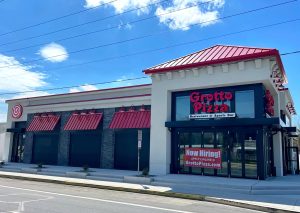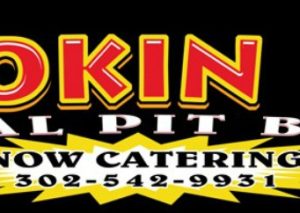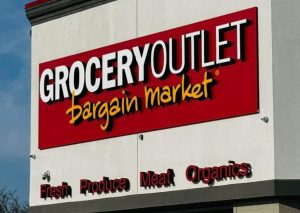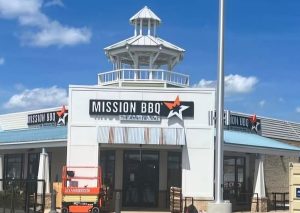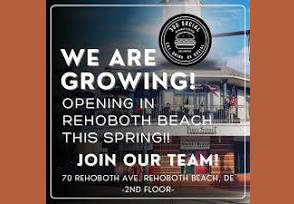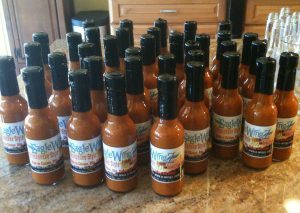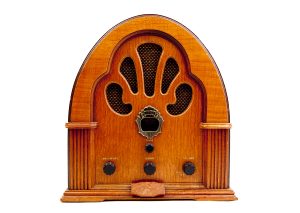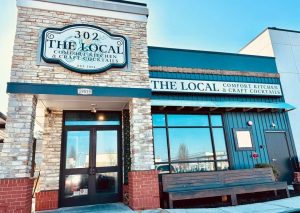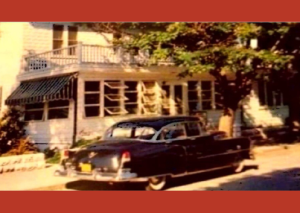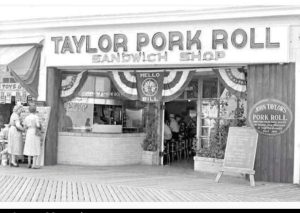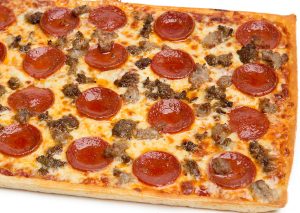What would you like to do?
-
Select a Section
Who do I complain to about bad carryout food?
Call the restaurant, ask for the owner or manager and tell them. The majority of restaurateurs want to give quality and will try to make it right. It's fair to at least give them a chance to do that. No restaurant is perfect.
If they are rude to you, and you ACTUALLY have a real, valid issue you can describe in detail, then your only option is to go public on TripAdvisor or whatever.
My delicate palate requires Prime beef. But most steakhouses serve Choice. Wazzup?
Your delicate palate needs to educate itself. Because of the influx of Waygu/Kobe meat, Prime has been priced waayy out of the market for most restaurants to stay competitive. And, in today's beef industry, the difference between the two is so arbitrary as to be negligible. Smart restaurateurs (like Tom Holmes at 1776) can serve you a prime on one plate and a choice on another and you will not be able to tell the difference – except when the check arrives.
The USDA's Prime grade is complicated by two confusing issues, and both relate to marbling. For the past century, our entire beef-grading system has been based on the now-controversial notion that marbling, the dispersion of white fat in red muscle, is the single most important criterion for measuring beef quality, without regard to age, breed, feed, flavor, tenderness, or any other factors.
When this system was adopted, our cattle industry was a lot more homogeneous. We ate mostly meat breeds (as opposed to dairy cattle) that were finished with corn or other grains, and within this reasonably consistent pool of beef, marbling was a fairly telling way to differentiate quality. But marbling is not everything. Grass-fed beef has far less marbling than grain-fed, yet many prefer its flavor. Certain breeds produce better-tasting meat without an accompanying increase in marbling. In many beef-obsessed countries, like Spain, older, more flavorful animals are considered superior. The Japanese beef-grading scale evaluates both the quality and the luster of the fat as well as marbling, while our scale considers all fat equal.
So this old-fashioned “one size fits all” grading system is (like most everything the government undertakes) becoming outdated and mostly without merit – again, other than how much the restaurant pays for the meat and consequently how much you pay for it at the table. Find a restaurant that you like and stick with it. You will get an excellent steak and your wallet will thank you.
Why did you delete my negative comment on your Facebook page?
My Facebook page is there to inform my FB friends/followers of restaurant news, and to help drive visits to RehobothFoodie.com. My Facebook page is not the forum for negative opinions. The place for that is RehobothFoodie.com (at the bottom of each restaurant review is a button that says “Post your Comment” Have at it!).
I cordially invite you – in fact, I encourage you – to post any and all comments, negative AND positive (except ones that complain only of menu prices!) – on the appropriate review article at RehobothFoodie.com. That IS the forum for restaurant commentary.
Sadly, I regularly receive inappropriate posts that are almost surely posted by competing restaurants or friends/family of restaurant owners. I've gotten pretty good at recognizing that; a comment with high praise for an obviously mediocre restaurant – or a comment with almost hysterical condemnation of a good or very popular restaurant; all of these are suspect. If you write one of those – or harp on price and only price, it might not be posted. I invite you to curb your enthusiasm and try again.
I love the posts, but they need to be as accurate and objective as possible.
Why didn’t you post my complaint about high prices?
Commentary on price isn't relevant to the quality of the food or service in a restaurant. Price/affordability is more of a personal issue for each individual guest to decide.
That being said, it is a fact that seasonal resort restaurants tend to be more expensive than non-resort restaurants. There are several reason for this: (1) Rents are much higher in a seasonal resort. Downtown Rehoboth, Lewes and Dewey restaurant often pay TWICE the rent that they would pay anywhere else. (2) Seasonal resort restaurants only make a reasonable profit in the summertime when the city is full of vacationers. Though many of them stay open year-round in order to keep their help, their profit margin is much, much lower for those 7 or so winter/off-season months. So seasonal resort restaurants have to adjust their prices higher to account for this disparity and still cover the costs of rent, food, supplies and labor. Basically, they rely on the 4 or so months of in-season/summer business to cover their entire year of costs.
In order to stay in business, restaurants set their prices somewhere between covering their costs (including rent, labor, etc.) and still attracting customers. If those prices are too high and they price themselves out of the market, then the restaurant will go out of business. If they are too low, they will go out of business because they could not cover their costs. With brand new restaurants, that remains to be seen after the crowds have settled down and reality sets in. Especially in the off-season.
Where can I get sushi delivery?
The words “deliver” and “sushi” should never be used in the same sentence. Sushi and sashimi (or any raw protein, for that matter) are much too prone to food-borne pathogens and temperature-related spoilage to be subjected to that no man's land in some guy's Toyota between the restaurant and your home.
Imagine a plate of sushi sitting on Rt. 1 in the middle of July in traffic. And sitting. And sitting.
Sushi needs to be delivered from a sushi bar within sight of your table in a restaurant. And even then, that sushi bar must be spotless, and manned (or womaned) only by experts.
Stay safe!
How can you be objective in your reviews if restaurants advertise on your radio show?
Up to this point, I have been fortunate to not have to deal with that problem. The restaurants that have been kind enough to advertise on my radio show happen to be restaurants about which I wrote generally favorable reviews long before I had the show. These restaurants are run by professionals and are consistently good. Repeat visits bear this out.
The radio show grew out of the popularity of RehobothFoodie.com, so I would never compromise the objectivity of my articles. Visitor feedback suggests that this is the main reason so many people use the site regularly. Of course, I will never accept restaurant advertising on the website, since, unlike the radio show, all the reviews — positive and not-so-positive — are right there.
Where’s the Black Friday Gift Card List?
An accurate Black Friday gift card list is an exercise in futility. Many places either publish deals on Facebook or don't publish them online at all. This makes it impossible for me to chase down each and every deal.
So check the websites, Facebook pages or onsite signs at your favorite restaurants. Or call. The phone numbers are on my Cheap Eats/Specials list. Enjoy!
How come I can’t print out your Cheap Eats/Specials list?
Because of the interactive nature of the Cheap Eats list, it is not designed to be printed. There are just too many moving parts. Keep in mind that the list changes daily as updates and new specials and hours come in. So a printed copy would quickly become obsolete anyway.
Note that you can also access the list on your smartphone by going to Cheap Eats on the site or you can access it from the Rehoboth In My Pocket smartphone app by tapping “What's happening now?”
I asked for bread, and the waiter told me that they don’t serve bread any more. Why?
Interesting question, and I get it a lot.
The word I get from restaurateurs I have spoken to about this is that 50-70% of the bread they put on the table is not eaten. Quality restaurants know that that bread has to be thrown away (once something has been on a customer's table, it cannot be reused — or at least it's not supposed to be…).
They blame, (1) the plethora of fad diets that have made people fear carbohydrates, along with, (2) those who decide they are not going to eat gluten for no stated reason other than being seen as “healthy” (no truly scientific basis for any of that, except of course in the event of an actual diagnosed medical allergy or sensitivity due to celiacs disease).
Many restaurants (Matt Haley's SoDelConcepts restaurants and Touch of Italy, for example) bake their own bread so they can control not only the cost (in-house bread doesn't have to be delivered) and the amount they serve/make in the short run. Other restaurants charge a very small amount for their bread so only the people who want it will order it. An example of this is the cornbread at Po'Boys Creole & Fresh Catch in Milton.
Quality restaurants survive on making you happy, but many chefs and owners are frustrated with the hundreds of dollars they throw in the trash. Some will pass the savings onto the customer by controlling menu prices, others will simply enjoy the few hundredths of a percent increase in profit. Either way, it's better than throwing untouched food in the trash.
I saw a Sysco truck in front of my favorite restaurant! Some people say that only mediocre restaurants buy from them. Am I wrong?
Beware of the faux “anti-Sysco” (or anti-U.S. Foodservice, or anti-whatever) attitude that is perpetrated by certain restaurants that try to capitalize on “buying locally,” “organic” and all that feel-good talk rather than just putting out consistently good food. I can tell you from 100% experience (I have owned or been part-owner of 5 eateries) that the local restaurants that demonize companies like Sysco will most certainly have a Sysco (or U.S. Foods or whatever) truck in front of their restaurants some time during the day, just like everyone else. It just makes sense when purchasing certain items in bulk.
What many people don't know (or don't bother to find out) is the the local Sysco warehouse that services southern Sussex County buys much of its in-season produce from local MD and DE farms. It just makes sense from a business point-of-view because the expense of trucking refrigerated items across the country (often the case with non-in-season items) is a huge part of the cost. And they bring the product to the restaurateur's door.
Restaurants that crow about going to local farmers' markets are generally ending up with the same produce, except that it's cheaper for them to drive to a farmers' market rather than pay Sysco (or, again, whomever) the additional costs associated with delivering it to them. And Sysco, like your local grocery store, offers a wide variety of the same “organic” items that local restaurants try to make you believe are something unusual or peculiar only to them.
Another fact that many people don't know is that Sysco, again, like your local grocery store, sells many different levels of quality in order to service the widest possible range of restaurants. So a local restaurant that says that a product sold by Sysco is inferior is trying to fool you into thinking that their product (whatever it might be) is superior, when in fact they could have just as easily purchased the better product from Sysco (or, I repeat, ad nauseum, any food purveyor).
It's important to remember that Sysco is primarily a warehousing and trucking operation. The great majority of their products are available (at all levels of quality) for purchase by its customers in the same way that a range of products are on the shelves at the grocery store available for you to buy. If you buy a cheap, inferior ham, for example, you don't blame the grocery store — you should blame yourself for not buying the higher quality (and, by definition, more expensive) product. There are people who can only afford the cheaper product, and so it makes sense for the store to offer it to them.
People often overlook the fact that the amazing range of in- and off-season products available at restaurants is due directly to large companies like Sysco, US Foods and the like. The very fact that you can get guacamole at your favorite local Mexican joint in January is due, in part, to this. Am I trying to make you think Sysco or the other purveyors are better than buying from a produce stand or farmers' market? Of course not. What I'm saying is that in many cases it's pretty much the same thing, except that you are having it delivered to your door at a naturally higher cost.
So thanks to huge operations like Sysco and the like, local customers have a wider array of products from which to choose, which, if they actually know what they are doing in the kitchen, can translate into better dining for us all. The ones who don't measure up would rather blame the trucking company that brought their food rather than their limited culinary talents. Too bad. And some people actually believe it.


